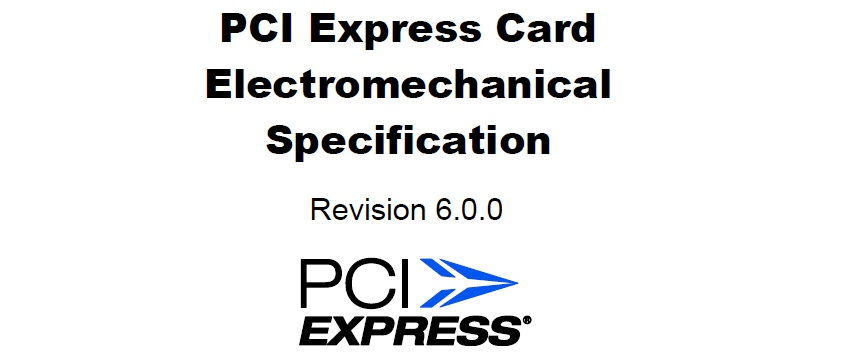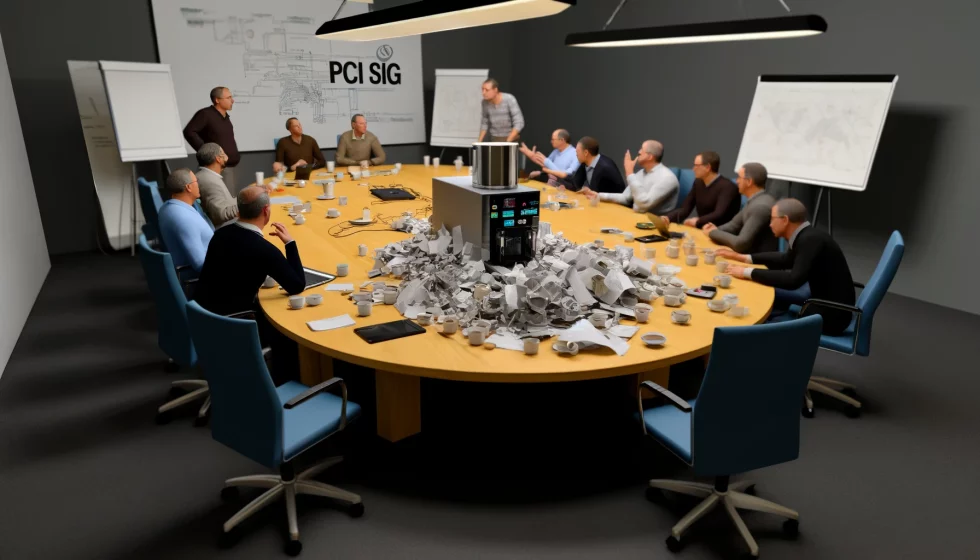Although many see the PCI SIG as the originator of the ill-fated 12VHPWR or 12V2x6 connector, the PCI Special Interest Group (PCI SIG) is an industry-wide non-profit organization founded in 1992. Its members consist of hundreds of companies from the computer and electronics industry who work together to develop and promote standards for peripheral component interconnectivity. The best known of these standards is PCI Express (PCIe), which plays a central role in modern computing environments. However, the members of this group are active or present in different ways. And because I’m always asked who is actually “behind” all this, I’ve summarized a little bit of information.
After all, not everything that has a plug is bad in principle. The PCI SIG arose from the need to create a standardized approach to computer expansion. Before the introduction of the PCI standard (Peripheral Component Interconnect), various interconnectivity standards were in use, which were often incompatible with each other. This made the development and compatibility of hardware components considerably more difficult. The main purpose of the PCI SIG is to create and maintain specifications for data traffic between the central processors of a computer and its peripheral devices. The group focuses on developing open and scalable standards that are supported by a wide range of hardware and software vendors. The power supply issue is more of a side-kick.
PCI Express, often referred to simply as PCIe, is a high-speed interface for hardware devices in computers. PCIe was first introduced in 2003, replacing older standards such as PCI and PCI-X. This new standard offered many benefits, including higher speeds, improved data integrity and greater flexibility. The technology uses serial connections, which are faster and more efficient than the parallel connections of the original PCI standard. Each connection, known as a lane, consists of two pairs of wires, allowing data to be sent and received simultaneously.
What everyone actually knows: PCIe has established itself as the preferred interface for a variety of system components such as graphics cards, network cards, SSDs and other peripherals. There are PCIe slots of different sizes, from x1 to x16, depending on the bandwidth required by the connected device – from PCIe 1.0 to the current version PCIe 5.1 and the planned introduction of PCIe 6.0. Each new version doubles the transfer rates compared to the previous one, which supports the continuous innovation in hardware technology.
With the increasing amount of data and speeds required by modern applications and technologies such as AI and machine learning, the PCI SIG faces the challenge of evolving the PCIe standard to meet these needs. Issues such as energy efficiency, data security and compatibility with emerging technologies are also important. The PCI SIG is continuously working to improve the specifications to not only increase performance and efficiency, but also to reduce implementation costs and facilitate adoption across a wider range of devices. So much for the anonymous theory
But which companies are actually primarily responsible for the PCIe standard? This is not really a secret either, as many leading companies in the technology industry are actively involved in the development and continuation of the PCI Express (PCIe) standard. These companies are usually members of the PCI Special Interest Group (PCI SIG), which manages the standard. Some of the most prominent members and their contributions to the PCIe standard include:
- Intel
As one of the main initiators for the development of the PCIe standard, Intel continues to play a central role in defining new versions of PCIe. Intel is known for developing leading technologies in processors, semiconductors and computer components that make extensive use of the PCIe standard. - AMD
AMD is also a major player in the field of processors and graphics cards that utilize PCIe. AMD actively supports the development and implementation of newer PCIe versions in its products. - NVIDIA
As a leading manufacturer of graphics processors and other visual computing technologies, NVIDIA is heavily involved in the further development of the PCIe standard, particularly with regard to the requirements of high-performance graphics cards and AI data centers. - Dell Technologies
Dell utilizes PCIe technology in a variety of its products, including servers, laptops and storage systems, and contributes to the advancement of the standard. - IBM
IBM is known for its innovations in computer hardware and software and makes extensive use of PCIe in its server and storage products. IBM has also contributed to the development of the technology, particularly in the area of high-performance computing and storage solutions. - Cisco Systems
As one of the leading manufacturers of networking hardware, Cisco has a strong interest in ensuring that PCIe is used efficiently and securely for networking technology. - Hewlett Packard Enterprise (HPE)
HPE uses PCIe in its servers, storage systems and network devices and is actively involved in the further development of the standard.
However, these companies are just some of the prominent members of the PCI SIG. The organization has hundreds of members, ranging from startups to some of the largest technology companies. All of these members help define, test and refine the PCIe standard to ensure it meets the evolving needs of the technology industry. However, not all companies actively participate with their own contributions and staff. Below is an alphabetical list of the companies that were or still are responsible for CEM 5.x to 6.x and, of course, for the unwanted power connector:
- 3Dlabs, Inc. Ltd.
- AMD
- Amphenol
- Anritsu
- Bellwether Electronics Corporation
- Cisco/Pure Storage
- Dell Technologies
- FCI
- Foxconn Interconnect Technology
- Hewlett-Packard Enterprise Company
- IBM Corporation
- Intel Corporation
- Kioxia
- Lots
- Luxshare-ICT
- Marvell
- Mellanox Technologies
- Molex Incorporated
- NI
- NVIDIA
- Tektronix
- Teledyne LeCroy
- Tyco International, Ltd.
- Wavecrest
- Xilinx
With that, I’ll leave you to your well-deserved weekend and it’s always nice to know who is actually behind such a standardization association. Whether you can then sleep better is of course another matter.



































10 Antworten
Kommentar
Lade neue Kommentare
Urgestein
1
Veteran
1
Veteran
Urgestein
Urgestein
Mitglied
Mitglied
Veteran
Alle Kommentare lesen unter igor´sLAB Community →